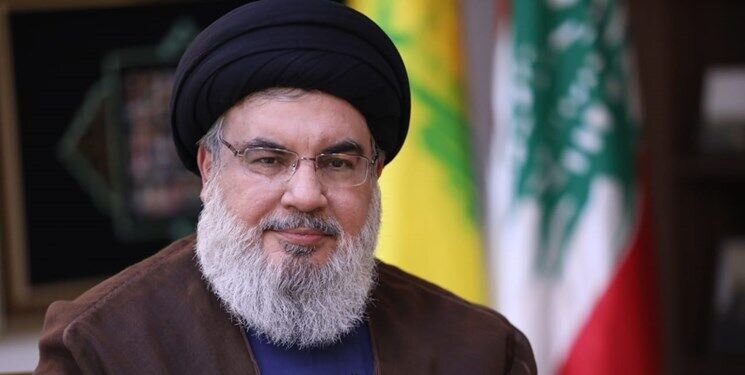The way Sayyed Hassan Nasrallah rose to prominence

TEHRAN - Sayyed Hassan Nasrallah, one of the most powerful Arab figures in the Middle East, has left a lasting mark on modern Lebanon, the Arab-Israel conflict and the wider region.
He was martyred aged 64 in a series of powerful Israeli air strikes in southern Beirut on September 27.
Under Nasrallah, whose surname translates as "victory through God", Hezbollah grew from a local armed movement to the largest political party in Lebanon’s recent history.
In the 2018 parliamentary elections, Hezbollah won more than 340,000 preferential votes, the most for any party in Lebanon since independence.
In October 2021, Nasrallah, a nightmare for Israel, announced Hezbollah had 100,000 fighters, making it among the most powerful armed organizations worldwide.
Nasrallah, whose speeches attracted attention from across the Middle East and beyond, was long prominent in the Axis of Resistance, which includes Hezbollah, the Palestinian resistance movements Hamas and Islamic Jihad, the Houthi movement in Yemen, and several Iraqi resistance groups.
Nasrallah was born in 1960 to a poor Shia family in Sharshabouk, a deprived area of east Beirut's Karantina. Interested in religion while young, he was inspired by Sayyed Musa Sadr, an Iranian-born imam of Lebanese descent, who in the spring of 1974 launched the
Movement of the Deprived, better known as Amal, to secure more power for Lebanon’s neglected Shia community, and improve conditions in east and south Lebanon.
Civil war broke out in Lebanon in April 1975; in July, Sadr launched the Lebanese Resistance Brigades, Amal’s armed wing, to protect south Lebanon from Israeli incursions.
Nasrallah joined Amal. As the civil war escalated, his family moved from predominantly Christian east Beirut to their ancestral village of Bazourieh in Tyre.
In December 1976, Nasrallah left for Najaf in Iraq to study at the city’s religious seminary (hawzah), which advocated a more active role for Shia religious scholars. There, he met Lebanese scholar Sayyed Abbas Mussawi, who was studying under Sayyed Mohammad Baqer Sadr, a cousin of Musa Sadr.
In early 1978, an Iraqi Baathist crackdown on Shia forced Nasrallah and Mussawi back to Lebanon. Mussawi founded a religious seminary in Baalbeck, where Nasrallah continued studying.
The next year, Nasrallah and Mussawi - now an Amal official - backed Iranian imam Ruhollah Khomeini, whose supporters had established the Islamic Republic of Iran.
In June 1982, Israel invaded Lebanon, after an assassination attempt on Shlomo Argov, Israel’s ambassador to London by the Abu Nidal Organization, a splinter group of the PLO (Palestine Liberation Organization).
Israel besieged Beirut for 10 weeks before occupying it in September, intending to drive out the PLO and install a friendly puppet government. The assault killed at least 20,000 Lebanese and Palestinians, mainly civilians, and more than 370 Israelis, most of them military.
To deal with the repercussions of the invasion, Lebanese President Elias Sarkis formed a unifying National Salvation Committee, including Amal leader Nabih Berri and Lebanese Forces militia leader Bashir Gemayel, Israel’s main Christian ally in Lebanon.
But Mussawi, Nasrallah and others who backed Imam Khomeini defected from Amal, accusing it of betrayal by joining the committee; armed resistance, they said, was the only answer.
The defectors established Hezbollah during the summer of 1982. It supported Imam Khomeini’s Shia doctrine of velayat-e faqih (known in Arabic as wilayat al-faqih).
In 1982, Hezbollah launched a guerrilla warfare to drive Israel from Lebanon. It said this was a prelude to freeing historic Palestine, occupied by Zionist settlers, according to Middle East Eye.
By the summer of 1985, Israel had left much of south Lebanon, amid ongoing attacks, and occupied a string of communities close to the border. But Hezbollah pushed on and hit Israeli outposts in the so-called Security Zone.
That summer, Shia groups hijacked TWA Flight 847 and forced it to land in Beirut. One hostage was killed; the remaining 152, more than half of whom were American, were freed after Israel released 700 Lebanese and Palestinian prisoners.
How did Nasrallah become the leader of Hezbollah?
In 1985, Nasrallah became head of Hezbollah’s executive council and a member of its shura council. He often went to Iran to consult and receive updates on the ongoing Iran-Iraq war in the 1980s because he spoke better Persian than his colleagues.
In February 1992, Mussawi, by now Hezbollah’s secretary general, his wife and child were assassinated in an Israeli air strike.
Nasrallah took over Hezbollah, and under his leadership, the group acquired longer-range rockets, allowing it to target more areas in northern Israel.
During the summer of 1992, he fielded candidates for the first post-civil war parliamentary elections, when Hezbollah won 12 seats. It has since participated in every parliamentary election.
Of all the armed groups which have opposed Israel, Hezbollah has caused the Israeli armed forces the most difficulty.
Since the founding of Hezbollah in 1982, there has not been a year when there have not been exchanges of fire or rocket fire between the two sides.
During the mid-1990s, Hezbollah expanded military operations in the Israeli-occupied zone, miring Israel in an unwinnable guerrilla warfare and arguing it was doing so to recover the region and “allow its displaced people to return to their homes”.
In May 2000, Israel withdrew from south Lebanon, the first time it had ended the occupation of an Arab territory without a treaty or security arrangement. The move validated Nasrallah’s long-standing argument that only armed resistance could recover Arab land.
Leave a Comment